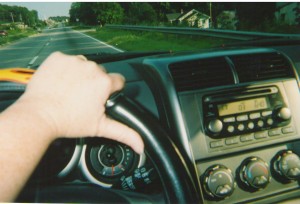Images are everywhere and everyone—from children to professionals schooled in digital media production—is making them. Digital cameras are commonplace, standard equipment in cell phones. These devices record countless photographs and videos, which are disseminated across media sharing platforms such as Flickr, Picasa, Instagram, and YouTube. Chances are more people carried a camera (in the form of a cell phone) to worship services last week than carried a bible or some other sacred text.
As far as I am concerned, these new digital realities are an opportunity for studying and engaging congregations. As a visual sociologist, I am interested in the use of images (photos, videos, drawings, etc.) to collect, analyze, and present information about religion, culture, and society. On this website you will find visual tools for congregations, their leaders, and those who study them. One of these tools is designed to take a snapshot of a congregation—that is, to use people’s photos to begin to understand attitudes, beliefs, practices, or experiences in relation to a specific topic.
Let’s suppose you are planning a sermon or lesson on prayer and want to understand a little about your congregation’s relation to it. A few weeks before you begin preparing the sermon, invite the congregation to take photographs with their cell phones or digital cameras that explore prayer. You could, for example, ask them to photograph the place(s) in which they pray. I recommend asking them to take at least two contrasting photos to get at the range of experiences they have. In the case of prayer, you could ask for examples of places where they feel close (or closer) to God or distant from God. Ask them to email their photos within a week (or so) and to include a brief description (a few sentences) of what the photos are about. And when you receive the photo, send a quick note to thank them, ask for any further explanation you feel is necessary, and ask for permission to use their photo and/or story in your sermon or lesson.
Once you have the photos and stories collected, it is time make sense of them. You probably won’t have enough data to make any conclusive determinations about your congregation, but you do have a collection of information that can help you understand what is going on in your congregation. As you ponder the photos, ask yourself a few questions. What do these photos and stories have in common? Could they be grouped into categories? Do any of the photos surprise you? Does anything seem to be missing? What do they suggest about how the congregation’s attitudes, beliefs, practices, and experiences? Are there specific needs that could be addressed or examples that everyone would do well to follow? And which of these photos and stories (if any) could be helpful when teaching on this topic?
Perhaps an example would be helpful at this point. In the Spiritual Narratives in Everyday Life project, we were interested in understanding how religion and spirituality showed up in a person’s typical day. To do so we invited participants to take photos and we asked them to tell us the story behind their photographs. Quite a few pictures related to the topic of prayer. If I were to imagine myself using these photos in the way described above, I would first observe that individuals seemed to fall into a pattern and have a preferred or favorite place to pray. If they are going to pray, these are the places people tend to go. Examples include a favorite chair (Photo 1), outdoors, (Photo 2), and during their morning commute (Photo 3). We are creatures of habit, and maybe I would consider challenging people to try something new during my sermon.
Second, many of the photos did not surprise me, they were of places I could imagine myself being comfortable praying and feeling close to God, for example in the comfort of my favorite chair (Photo 1). The person who shared this photo pointed out that she used the chair so much that the chair developed an indent that fit her perfectly. Perhaps this photo could be used to talk about the importance of finding a comfortable place to pray, coming up with a routine that is well-suited to who you are, or being so consistent that one leaves “behavioral residue” behind—an indent in your favorite chair in the shape of one’s behind, so to speak.
Third, other photos opened my thinking to new possibilities: some people took photos of nature and talked about feeling close to God when outside, walking in the woods, standing on the beach (Photo 2). And even though these were places I may not have regularly prayed, they make sense to me. The insight of this photo might be to be creative in prayer, to move beyond one’s routine, or to point out that there is no ‘right place’ to pray.
Fourth, a couple of people took photos of themselves in places that challenged my thinking about prayer. For example someone photographed of the interior of their car and talked about meditating while driving (Photo 3). Another described her life as being so hectic that the only time she could “talk to God” was during her morning commute. These stories and photos lead my thinking in another direction to consider the ways that daily life may intrude upon or shape important religious practices. We always seem to be short on time, so how does one make space for God? I also need to consider how my religious tradition could inform the kind of spiritual multi-tasking these photos suggest.
Even though we have been taught that an image is worth a thousand words, for these photos to be effective, they need to be discussed or somehow incorporated into the worship service or lesson. In other words, one can’t just show the image and expect it to convey the story by itself. With the permission of the photographer(s), an image could be used on the cover of a bulletin with a caption to prepare the congregation for the lesson of the day, as a background slide during a song that relates to the photo, or as a PowerPoint slide (or series of slides) that integrates the stories of the congregation into a sermon or lesson.
The photos and the stories that accompany them should provide something more than just an illustration. These snapshots are intended to open a congregational leader’s eyes to the needs and experiences of the people whom they serve. My hope is that this technique will engage congregations in conversations that encourage members to reflect on important topics, foster greater participation and involvement, and cultivate spiritual growth.
Headline photo by Kamsin Kaneko on Unsplash




